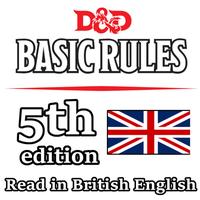Game Dice
The game uses polyhedral dice with different numbers of sides. You can find dice like these in game stores and in many bookstores.
In these rules, the different dice are referred to by the letter d followed by the number of sides: d4, d6, d8, d10, d12, and d20. For instance, a d6 is a six-sided die (the typical cube that many games use).
Percentile dice, or d100, work a little differently. You generate a number between 1 and 100 by rolling two different ten-sided dice numbered from 0 to 9. One die (designated before you roll) gives the tens digit, and the other gives the ones digit. If you roll a 7 and a 1, for example, the number rolled is 71. Two 0s represent 100. Some ten-sided dice are numbered in tens (00, 10, 20, and so on), making it easier to distinguish the tens digit from the ones digit. In this case, a roll of 70 and 1 is 71, and 00 and 0 is 100.
When you need to roll dice, the rules tell you how many dice to roll of a certain type, as well as what modifiers to add. For example, “3d8 + 5” means you roll three eightsided dice, add them together, and add 5 to the total.
The same d notation appears in the expressions “1d3” and “1d2.” To simulate the roll of 1d3, roll a d6 and divide the number rolled by 2 (round up). To simulate the roll of 1d2, roll any die and assign a 1 or 2 to the roll depending on whether it was odd or even. (Alternatively, if the number rolled is more than half the number of sides on the die, it's a 2.)

